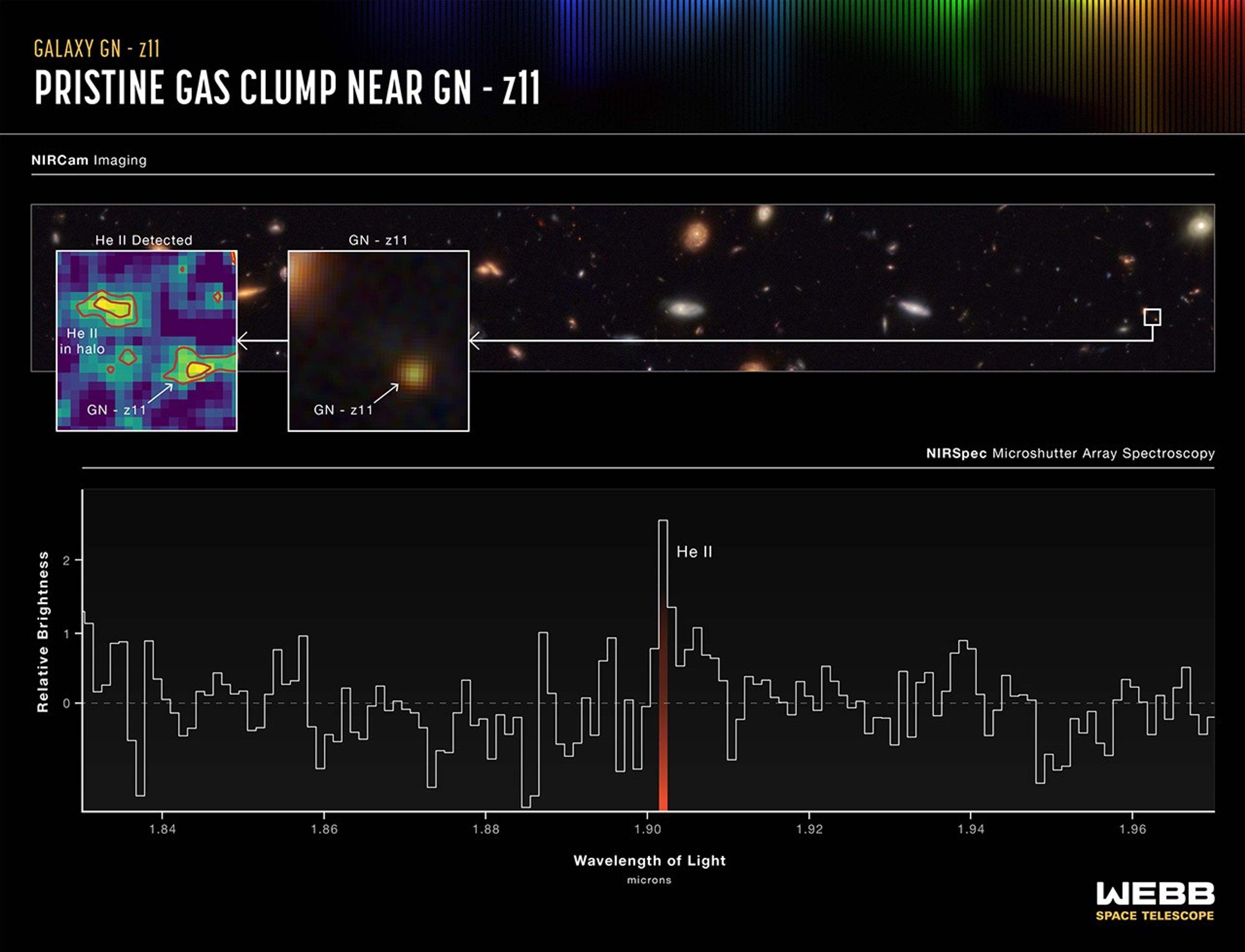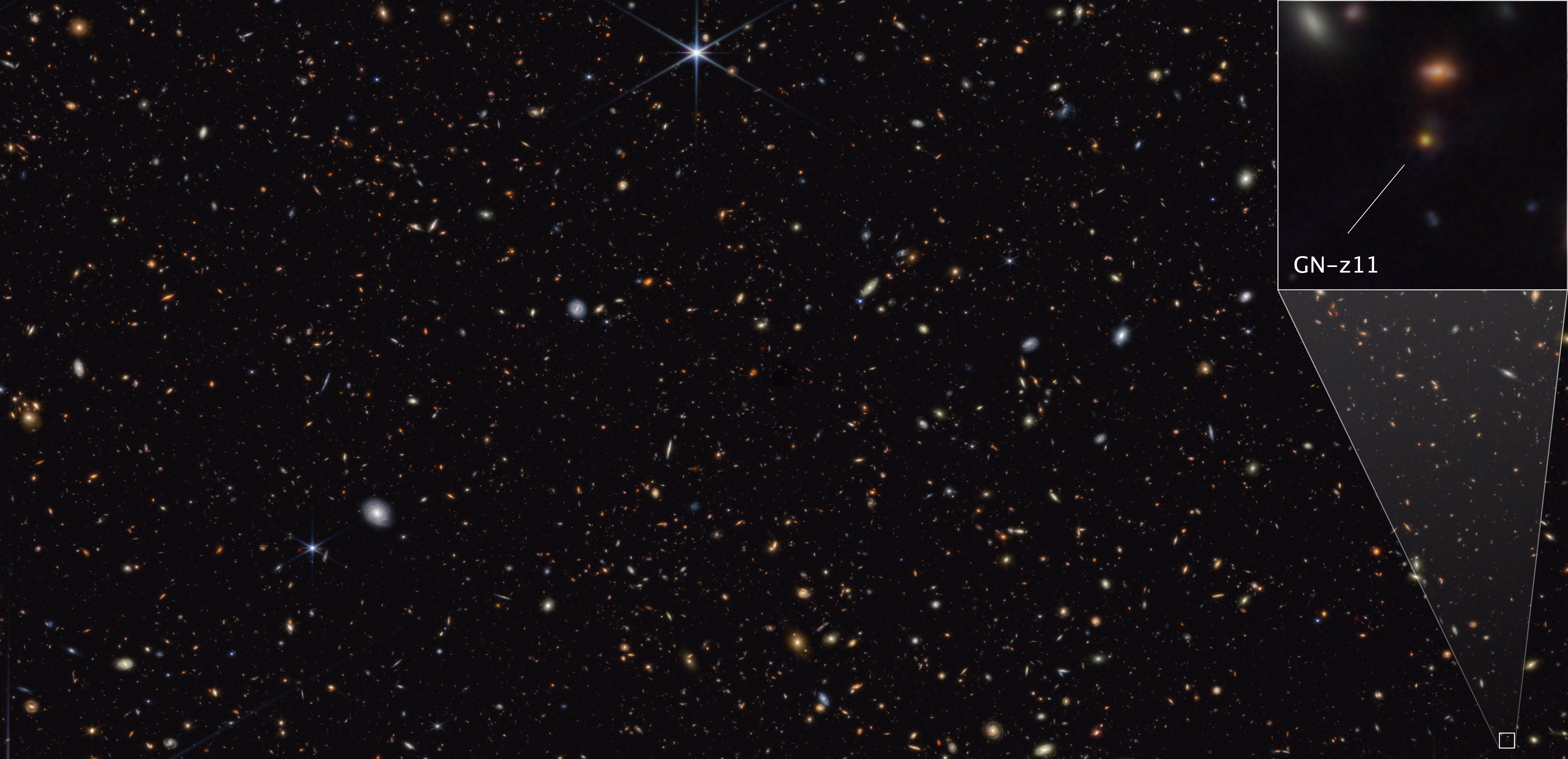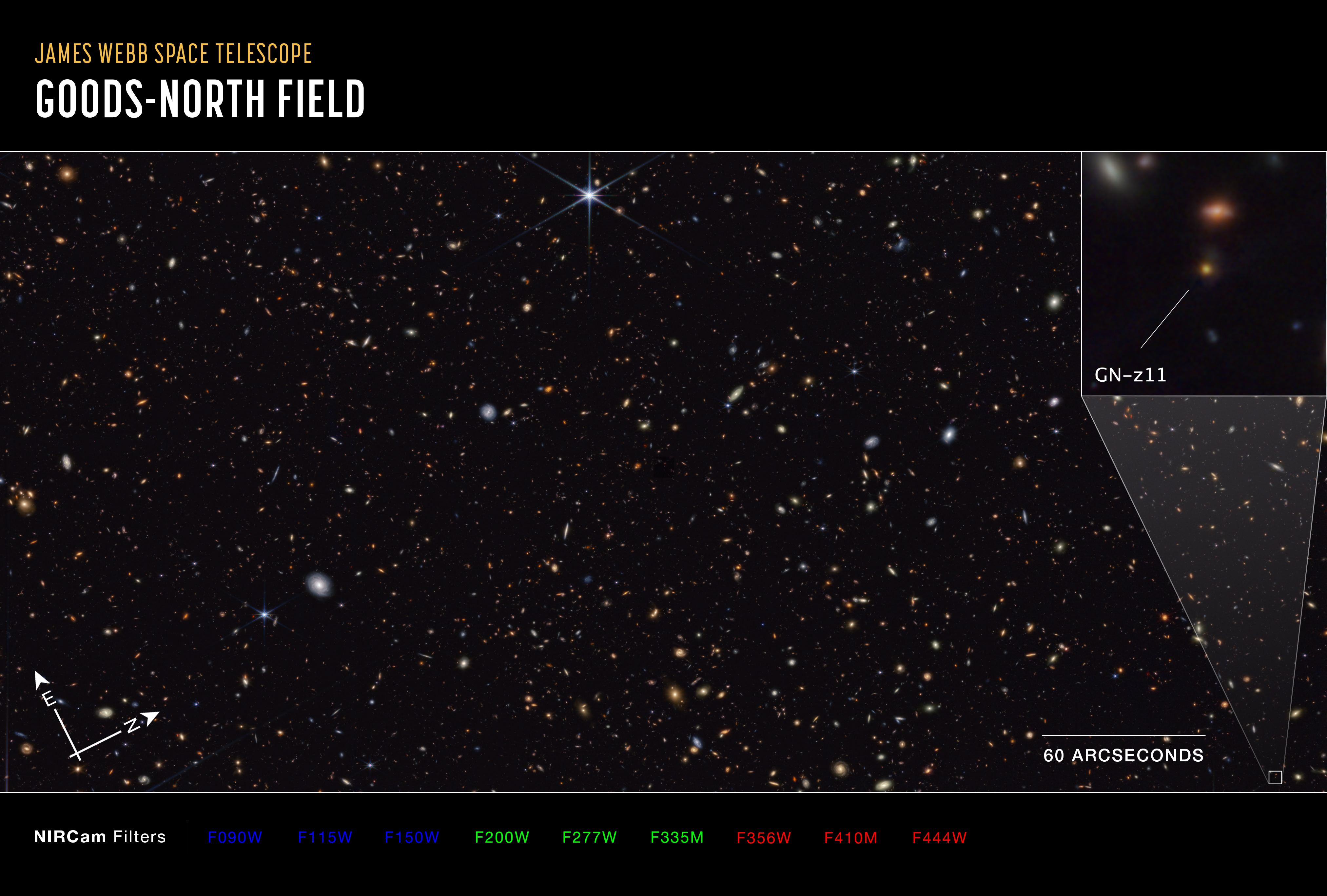1 min read
Pristine Gas Clump Near GN-z11

This two-part graphic shows evidence of a gaseous clump of helium in the halo surrounding galaxy GN-z11. In the top portion, at the far right, a small box identifies GN-z11 in a field of galaxies. The middle box shows a zoomed-in image of the galaxy. The box at the far left displays a map of the helium gas in the halo of GN-z11, including a clump that does not appear in the infrared colors shown in the middle panel. In the lower half of the graphic, a spectrum shows the distinct “fingerprint” of helium in the halo. The full spectrum shows no evidence of other elements and so suggests that the helium clump must be fairly pristine, made of hydrogen and helium gas left over from the big bang, without much contamination from heavier elements produced by stars. Theory and simulations in the vicinity of particularly massive galaxies from these epochs predict that there should be pockets of pristine gas surviving in the halo, and these may collapse and form Population III star clusters.
- Release DateMarch 4, 2024
- Science ReleaseWebb Unlocks Secrets of One of the Most Distant Galaxies Ever Seen
- CreditIllustration: NASA, ESA, CSA, Ralf Crawford (STScI)
Related Images & Videos

GOODS-North Field (NIRCam Image)
This image from Webb’s NIRCam (Near-Infrared Camera) instrument shows a portion of the GOODS-North field of galaxies. At lower right, a pullout highlights the galaxy GN-z11, which is seen at a time just 430 million years after the big bang. The image reveals an extended...

GOODS-North Field (NIRCam Compass Image)
This image of the GOODS-North field, captured by Webb’s Near-Infrared Camera (NIRCam), shows compass arrows, scale bar, and color key for reference. The north and east compass arrows show the orientation of the image on the sky. Note that the relationship between north and east...
Share
Details
Laura Betz
NASA’s Goddard Space Flight Center
Greenbelt, Maryland
laura.e.betz@nasa.gov
NASA, ESA, CSA, Ralf Crawford (STScI)




























